OLDER NEWS













MARCH PUBLICATIONS
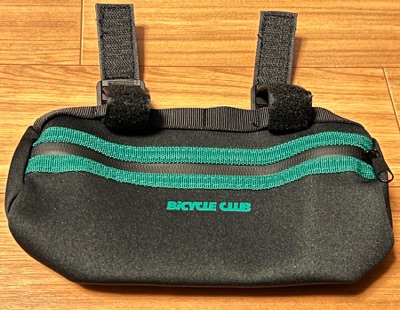
In terms of touring, the major cycling magazines are starting out the year slowly (normal for the cold months). Cycle Sports has an all-too-brief article on a 181 km route from Kyoto through Nara and on to Wakayama (the first part of which is mainly the long bikepath covered by us here. But in terms of giveaways, Bicycle Club offers a very nice waterproof handlebar pouch and includes a 2-page spread with suggestions about how to use it. Free with your purchase of the magazine.
HAPPY NEW YEAR!

AUTUMN PUBLICATIONS
The major December cycling magazines both come through with major articles about routes: Cycle Sports with multiple paths in the Izu-Fuji area, and Bicycle Club with no fewer than THREE articles (Ibaraki, a 10 day trip around Shikoku and a fun article on “oretoge” or “my mountain pass” — all with great photographs). BC even includes a freebie (back pocket holder). And if that weren’t enough, we were gifted with two year-end additions to major route series: the SEVENTH edition of the Cycle Sports Jitensha-tabi series, this one on Kyushu’s Mt. Aso (we haven’t scored a copy of that one yet) and the THIRD edition of the new Kyu-Kaido series on the ancient roads of Japan.


BE-PAL OCTOBER
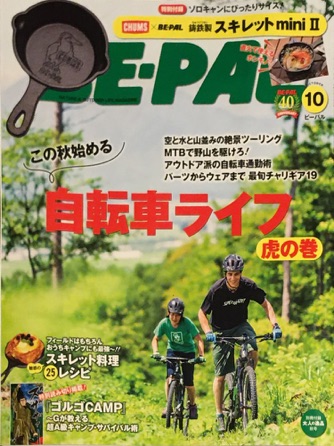

Japan’s version of the “vaccine passport” program (only for travel from and back to Japan) launched at midnight last night. Are these worth applying for? We investigate in our latest Special Report.
(It appears that some of the links were initially messed up; the problem has been fixed.)
SEPTEMBER CYCLE MAGAZINES

ultiple news outlets including Kyodo reported yesterday that Japanese municipalities will begin issuing vaccine passports in mid- or late July (initially paper but later possibly digital) to Japanese citizens, and reportedly foreign residents, to facilitate travel from Japan. However, there’s no word yet on when proof of vaccination will be accepted for people wanting to travel TO Japan, and in fact the Japan Times reports that “...Japan is not planning to establish a system that would allow vaccine passports issued abroad to be accepted when people enter the country”. Although several news outlets reported that the passports will be free of charge, JT says pricing has not yet been decided. More information as it becomes available.
JAPAN BEST 100 CYCLING ROUTES

But the more consequential recent release is a truly massive (nearly 200 pages!) guide whose title translates to “Japan Best 100 Cycling Routes (selected by cyclists).” While “best” is a subjective judgment, it offers dozens of excellent routes and many, many lovely photos, and it’s very reasonably priced at ¥1,650. Its only real flaw is a lack of consistency with regard to maps. Section 1 contains 50 of the 100 routes, illustrated with lovely photos but with only very tiny maps (but at least they’re there). Section 2 has long ride courses (Nikko, Shiga Kogen etc.) with larger maps. Section 3 is devoted to the Mt. Fuji area and also has decent maps (and it includes the Tokyo Olympics cycling route!) But the next section, on “touge” or mountain passes, has almost no maps at all! The following section, on river bikepath routes, has large maps in addition to QR codes (why?). Finally, there’s a 3-page section with only QR codes, and a final 2-page section listing 9 routes throughout the country with no maps at all. The inconsistency and even omission of maps in some cases is, frankly, baffling, since this is yet another guide put out by Cycle Sports. Still, very much recommended for overall value. One more caveat: this is the second Cycle Sports guide in a row to focus on mountain passes that does NOT include Shikoku’s Kyobashira-touge, perhaps the most spectacular mountain pass in the entire country. Why?

Today (April 12) COVID vaccination finally started nationwide, and with daily infections spiking particularly in the Kansai area, it’s not a moment too soon.
But there’s still no word on when cyclists and other tourists might be allowed into the country again. Ironically, the decision not to admit foreign spectators at the Olympics and Paralympics might result in tourists being allowed in sooner than if there was another huge COVID resurgence in the wake of mass spectator attendance. All we can do at this point is wait and see.
In the meantime, many new touring books and magazines have come out in the past few months. We present a rundown in our latest Special Report.
(And by the way, the May issue of Cycle Sports has a big — nearly 50 pages! — special section on cycling completely around Shikoku, with lots of lovely photos, some side routes and even a freebie hand towel printed with “Round Shikoku” in both English and Japanese — highly recommended.)
CHEAP TRAIN TRAVEL IN JAPAN?!
There’s still no word on when tourists might be allowed back into Japan (we still think that’s not likely to happen until after the Olympics). However, if you’re already in Japan, you should know that, because they can’t count on an influx of foreign tourists anytime soon, the rail companies are beginning to make some of their foreign-tourist-only passes available to non-Japanese residents. Tokyo Time Out reports that JR Kyushu is already doing so, and JR East will do so soon.
The JR Kyushu offer is of limited duration and ends on March 29. As TTO says: “The most comprehensive All Kyushu Area Pass will normally set you back ¥29,920 – but with this promotion, you’ll only need to spend ¥12,000 for a three-day pass. The Northern Kyushu Area Pass, on the other hand, is just ¥6,500 for three days ... in Fukuoka, Saga, Nagasaki, Kumamoto and Oita prefectures.” (Passes for children aged 6 — 11 are half-price.
Beginning April 2021, JR East will make its Tohoku area* pass and Nagano—Niigata—Matsumoto—Hakuba area pass available to “anyone with a foreign passport regardless of visa type.” Both passes offer unlimited rides in the region for five consecutive days, for ¥20,000 adult for the Tohoku area (which includes Chiba and Tokyo!) and ¥18,000 for the Nagano area. (Passes for children are half price.)
(*The Tohoku area pass covers the prefectures of Tokyo, Kanagawa, Chiba, Saitama, Gunma, Tochigi, Ibaraki, Miyagi, Fukushima, Yamagata, Akita, Iwate and Aomori.)
Of course, three or five days to cover areas as large as this would result in a pretty rushed trip for normal sightseeing tourists. But what if you just wanted to hop on a train early each morning and go somewhere, hop off, assemble the bicycle and cycle along only the best parts of the area, and then train to another great destination to spend the evening and prepare for the next day’s ride? If you configured your itinerary carefully, this could be a fabulous deal. Bus travel is normally half as expensive as train travel. These price reductions likely make train travel even cheaper than bus travel — and, unlike buses, there’s usually no problem bringing a bagged bicycle aboard trains.
If you go for these passes, to get maximum benefit from them, plan your last ride on the final day carefully. For example. you might consider ending your Northern Kyushu pass with a train ride ending up in Nagasaki (since it’s such a wonderful city for an extended stay). If you choose the Tohoku pass, you could end with a LONG and normally very expensive return trip all the way to Tokyo.
HAPPY NEW YEAR 2021!

(The text below the “Happy New Year” greeting says “May 2021 be a ‘reboot’ (restart) year.”
COVID-19 UPDATE DECEMBER 2020
Our updated COVID-19 report is here.
JITENSHA-TABI 06

Japan’s domestic tourism stimulation program is in full swing. How viable is it — in particular for cyclists? We investigate in our latest Special Report.
FOREIGN RESIDENTS TO BE EXEMPT FROM 14-DAY QUARANTINE
No progress on restarting tourist entry, but Kyodo News reports today that returning foreign residents as well as business travelers and Japanese citizens will be exempted from the 14-day quarantine:
Those eligible will be required to submit a detailed plan of their movements in the 14 days following entry into Japan, including accommodation and place of employment, they said.
However:
Given the anticipated burden on airport staff to handle paperwork and other inspection measures, the government plans to impose a daily limit on the number of people eligible for the exemption based on testing capacity at airports and other ports of entry.
New regulations are expected by the end of the month. Kyodo reports that there will be “no restrictions on countries.” More as this story develops.
NOVEMBER TOURING

OCTOBER FUJI CYCLING

TOMORROW
Both the Japan Times and Kyodo News report that the restriction on entry (and re-entry) will end for all lawful foreign residents as of tomorrow, September 1. Re-entry to Japan will be contingent on showing the results of a PCR test (taken within 72 hours of boarding) and observing the same 14-day quarantine period that is required of returning Japanese nationals.
However, the Japan Times notes an additional requirement for resident foreigners wanting to leave and return:
[T]hose who are planning to re-enter will need to contact the Immigration Services Agency before their departure from Japan. Such requests will be accepted online.
The procedure is needed to keep a record of people departing from Japan and boost testing capacity at airports.
As before, there was no word on when tourists might be allowed to enter.
FINALLY
As reported on the 7 am NHK news this morning, the Japanese government has decided to allow re-entry to ALL legal foreign residents of Japan, contingent on taking a PCR test beforehand and then quarantining in designated hotels for two weeks upon arrival.
The NHK World website reports:
...the government is planning to allow the re-entry of all residential status holders on the condition that they take PCR virus tests and quarantine themselves for two weeks at designated hotels. The measures are similar to those currently taken for Japanese travelers.
About 2.6 million foreigners hold resident status in Japan. Officials are preparing to expand the testing capabilities at Narita and two other major airports to 10,000 people per day next month to meet the demand.
No target date was listed, although the Japanese version of the report says “starting next month” (September). In addition, the other two airports were not specified, but one is undoubtedly Kansai International Airport. We’ll have more information as this story develops. Still no word on any plans to reopen to ordinary travelers.
A JAPAN-HAWAII TRAVEL “BUBBLE”?
YOU CAN CHECK IN ANYTIME YOU LIKE BUT YOU CAN NEVER LEAVE
(With apologies to The Eagles)
Confirming previous reports, the Japan Times notes that stranded residents can now apply to be let back into Japan — but only if they left before the ban on re-entry was put in place. And most foreign residents will STILL be barred from traveling overseas and then being allowed back into the country:
”According to the Immigration Services Agency (ISA), people considering such a move — regardless of their visa status — will still need permission to re-enter the country under special circumstances deemed as humanitarian grounds, such as a relative’s death or a health emergency.”
Moreover, skyrocketing new cases in Tokyo and also nationwide mean there is little chance that Japan will open up to tourism anytime soon.
STRANDED FOREIGN RESIDENTS TO BE ALLOWED BACK INTO JAPAN
The Japan Times and Kyodo News report that the government will allow foreign residents who were stranded abroad to return to Japan, reportedly beginning in August. Returnees will need to present a negative COVID-19 test. However, this will not include people who left Japan after the ban was implemented (and presumably those in Japan who need to travel abroad in the future will still be prevented from returning). Kyodo News says:
Those who departed later or have newly obtained a visa with plans to move here will be allowed in at a later date, a government official said.
This shift seems unlikely to blunt the criticism of Japan’s policy summarized by Kyodo as follows:
Japan's expatriate community has been outraged by the government's prior refusal to let foreign residents back in except under "special exceptional circumstances," a nebulous set of criteria that includes the death of a family member.
Many other countries that have imposed travel bans such as Germany and France do not discriminate between citizens and foreign residents in granting re-entry.
Moreover, obviously tourists are still banned, and given the dramatically increasing case numbers particularly in Tokyo (more than 200 new cases per day for most of the past week, and over 300 yesterday), it seems unlikely that Japan will allow in ordinary tourists anytime soon.
CYCLING TO AVOID COVID
Kyodo News reports that 1/4 of Tokyo bicycle-commuters began doing so to avoid crowded public transport following the coronavirus outbreak. The survey, conducted in June, also found that 1/3 of respondents said their employers had actually recommended that they begin commuting by bicycle.
MORE FOREIGN RESIDENTS TO BE LET BACK INTO THE COUNTRY
The Japan Times reports today that more foreign residents will be allowed to return to Japan. Those permitted to return will be expanded to include “expatriate workers and educators.” A PCR test will be required to re-enter the country. We’ll have more information later in the week after the formal announcement is made.
Obviously this does not affect tourist entry, but any movement on entry by foreigners is progress.
CORONAVIRUS TESTING CENTERS
Kyodo News and the Japan Times report that Japan will open coronavirus testing centers at the three main international airports (Narita, Haneda and Kansai), and in the cities of Tokyo and Osaka.
The airport centers will test both international arrivals and departures, while the city centers will be exclusively for departing travelers. The aim is to increase PCR testing to more than 4,000 tests per day, and to use new methods to reduce testing times to a few hours (test results currently take 1 to 2 days).
The Japan Times article also says:
“The government has yet to decide whether to use [the centers] for those in Japan who may require evidence they are virus-free to travel outside the country.”
Meanwhile, talks on opening up reciprocal travel arrangements with Taiwan and Brunei are set to begin soon, and arrangements with China and South Korea are said to be “under consideration.” The process would be the same as that for the initial four countries: first business people, then students and finally regular travelers (“tourists”), and each stage will take time. So even when they happen, these openings will be slow.
FOUR COUNTRIES
According to today’s Japan Times, Japan is “in talks” to allow in travelers from Australia, New Zealand, Thailand and Vietnam. Entry would be contingent on getting a PCR test and submitting an itinerary of specific places to be visited during the travelers’ stay. Apparently they’re planning to allow in business people first, followed by students and then later tourists. Visitors may be required to use a GPS smartphone app to facilitate contact tracing. More info as this situation develops.
UPDATE: A Bloomberg article (also carried by the Japan Times) on Thailand tourism reports that “Thailand’s first few travel-bubble pacts, with nations such as Japan and Australia, probably won’t be ready until at least August.”
NO CHANGE IN STRICT ENTRY BAN
Japan’s current immigration policy still denies entry to travelers coming from 111 countries. As we’ve noted before, Japan is also preventing re-entry by non-Japanese permanent residents who were out of the country before the ban took effect. We’ve been on the lookout for any change in that particular policy, since it might indicate a softening of entry restrictions in general.
Yesterday the Japan Times reported that the exceptions to the ban on non-Japanese resident re-entry have been clarified. The details are not encouraging. The ban remains in place, and only in very limited circumstances will it be waived on humanitarian grounds. Moreover, people who are in Japan now but need to go overseas will also be prevented from returning; the only exceptions are for things like visiting critically ill relatives or attending funerals, having medical treatment, or testifying in court.
Since there’s been no relaxation of even the policy on lawful permanent residents, it seems unlikely that ordinary tourists will be allowed in anytime soon. There has been some talk (or rumor) of the idea of establishing travel “bubbles” between Japan and places that have held the virus in check such as Hawaii and New Zealand. If that happens, we’ll let you know.
COVID-19 UPDATE
We’ve updated our COVID-19 Special Report here.
TWO NEW TOURING GUIDES
The July cycling magazines don’t have much in the way of route information. Bicycle Club reverts to form by offering a freebie item (paper-thin cycling cap), but much of the rest of the issue is devoted to “indoor cycling style.” And Cycle Sports has an interesting comparison of online map services (covering services such as STRAVA Routebuilder, Ride With GPS and Komoot as well as Google Maps) but there’s little touring information. However, both magazines have released new stand-alone touring guides that come at the perfect time for anyone looking to enjoy the great weather on a bicycle in newly unlockdown-ed Japan.

The subtitle says that it “provides the know-how for traveling solo, from bike-bagging to long rides and bicycle camping.” Some guides turn out to contain mostly bicycle model recommendations and cycle gear promotions. Thankfully, this one mainly stays laser-focused on the nuts and bolts of how to tour. Almost half of the book is occupied by detailed coverage of 10 specific routes throughout the country — six of which are given additional space for profiles individual riders showing how they traveled each route, with many wonderful photos and examples of the specific gear they took along. Also has a section on bicycle-camping. Lastly, it’s relatively moderately priced (¥1200).
The guide from Cycle Sports is something we’ve been eagerly anticipating for a long time. It’s part of the magazine's Jitensha-tabi (cycle journey) series which up to now has consisted of six volumes. However, this apparently marks the beginning of a new Jitensha-tabi series that focuses on one particular type of road: the Kyu-kaido or old historic roads.

Both of these guides are available now in major bookstores throughout Japan. Here is the publishing information.

LOCKDOWN ENDED NATIONWIDE
As you’ve probably heard, the government has lifted the lockdown in all parts of the country (even in Tokyo and Hokkaido where daily cases are at or near the low double digits). This should make it easier (and more socially acceptable) for people to move around the country, including bicycle-tourists. So if you’re already here, you are presumably free to plan cycle trips, and inns and so on will be opening up again. However, the ban on people coming into the country is still in place (and even non-Japanese legal residents of Japan are still barred from returning). The government is reportedly studying the question of how to reopen the country to non-Japanese; stay tuned.
(The mood on the street is relieved but still wary; 100% of shop owners are still masked, and the vast, vast majority of people in downtown shopping areas and so on are wearing masks as well.)
An additional note: we’ll put this in the Update to our special COVID-19 report, but we have one important piece of advice for people planning to go cycle-touring in Japan: WEAR A MASK when near other people. This will accomplish two things: it will help to keep both you and others safe, and more importantly it will show people in rural communities that you understand the current situation and are taking the disease seriously. We can’t think of anything that will do more to ensure that your presence is accepted and welcomed in Japan.
KANSAI TO BE UNLOCKED
As reported late yesterday (May 20 JST), the government has decided to lift the (voluntary) lockdown advisory for the three Kansai prefectures (Kobe, Osaka, Kyoto). Details are now being worked out. The lockdown will remain in place for the Tokyo area prefectures (Kanagawa, Tokyo, Chiba) and Hokkaido. Note that this will not affect the international travel situation — at present, even lawful permanent residents of Japan are still not allowed back into the country! This situation was covered in the Japan Times and NHK reported on it last night as well, so that part may change — but it will probably be awhile before tourists are allowed in.
Incidentally, NHK last night presented a jaw-dropping statistic. Only 2,900 foreign tourists visited Japan in April — a 99.9 percent decline as compared to a year earlier.
THURSDAY
The news this morning reports that a decision on lifting the (voluntary) lockdown in the remaining 8 prefectures will be made on Thursday JST. (Note that this will not affect international travel, particularly arrivals; those restrictions will stay in place.)
If we were to make predictions, we’d say there’s a good chance that the lockdown will be lifted — even in the Tokyo area prefectures, cases were down to single digits yesterday. The case for opening up is particularly good in Kansai: yesterday in all of the Kansai prefectures only one new case (in Hyogo) was reported.
JAPAN PARTIALLY EASES LOCKDOWN
Japan has eased its (voluntary) lockdown in 39 of its 47 prefectures, keeping the lockdown in place in only the Tokyo and Osaka metropolitan areas (including surrounding prefectures) as well as Hokkaido, which has seen a resurgence of infections. The government says it will consider what to do about the lockdown in the remaining prefectures in one week.
Obviously this does not affect international travel, but it might make it easier (and more acceptable) to travel in most areas of the country for people who are already here, and for tourists once they are able to get in.
Stay tuned.
WHAT’S IN YOUR WALLET?
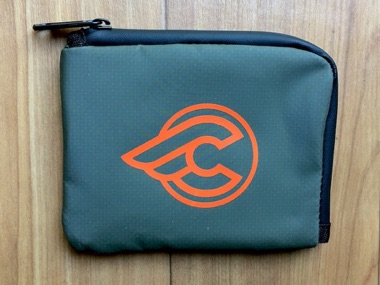
Japan's major cycling magazines have switched personalities this month (June) in that it's not Bicycle Club but Cycle Sports that offers the freebie: a very cool-looking wallet designed in cooperation with Italian bike manufacturer Cinelli. Absolutely FREE with your purchase of the ¥1,000 magazine. Get yours before they're all gone.
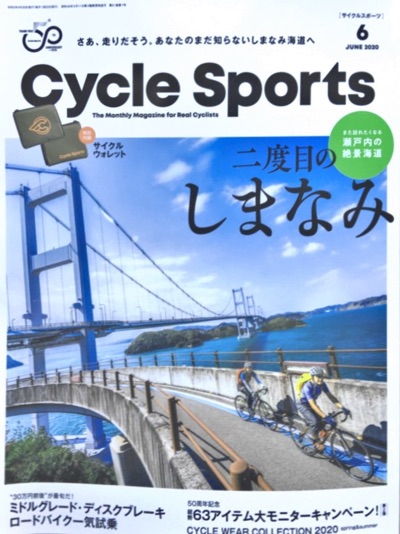
The other reason to get this issue is the lead article on "Your Second Trip to Shimanami" complete with truly impressive cover art.
@
OK, obviously it wasn’t “in a day or so,” but CoronaTime is different, as we're all discovering together. But we finally have a report on what the COVID-19 crisis means for cycling in Japan. Access it here:
COVID-19 and Cycling in Japan (May 2020)
SPECIAL REPORT
In a day or so we will post a Special Report on the current coronavirus situation in Japan and how it is likely to affect cycling during the coming months. Please stand by.
WAKAYAMA 800
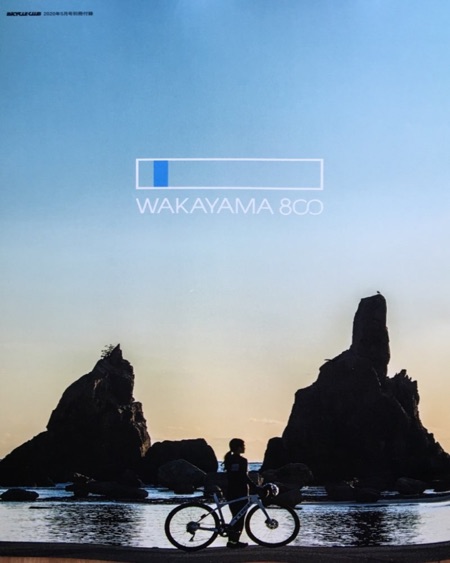
And here’s a site where you can get route maps for individual routes (click the MORE button for each route): https://wave.pref.wakayama.lg.jp/cycling/routemap-archive.php
HAPPY NEW YEAR!

NATIONAL CYCLE ROUTE LOGO
The relevant office in the Ministry of Land, Infrastructure, Transport and Tourism has graciously consented to let us post the very cool new official logo for National Cycle Routes in Japan, so here it is:

http://www.mlit.go.jp/road/bicycleuse/good-cycle-japan/national_cycle_route/english.html
A look at the “Mandatory Criteria” for the establishment of such routes will show what a major undertaking this is. Kudos to the Japanese government for supporting cycling and cyclists in this manner.
FIRST THREE NATIONAL
CYCLE ROUTES ANNOUNCED
Earlier this year, we reported on an ambitious plan by the Japanese government to establish national cycle routes in Japan, and noted that 59 routes were under consideration. Late in the year, the first three official National Cycle Routes were announced, and it should surprise exactly no one that Shimanami Kaido was selected to be one of the initial routes. The inclusion of the route circling Lake Biwa as one of the initial three routes is also not surprising. Only the third one was somewhat unexpected: the “Tsukuba-Kasumigaura Ring-Ring Road” (https://www.ringringroad.com/english/).
General information (in Japanese) on the three routes and general maps are here:
http://www.mlit.go.jp/report/press/content/001315541.pdf
Also in this document is the new official logo (selected from 273 entries). The standards for download and proper use are still being finalized; we’ll post the logo here as soon as we can legally do so.
WEIGHTY MATTERS

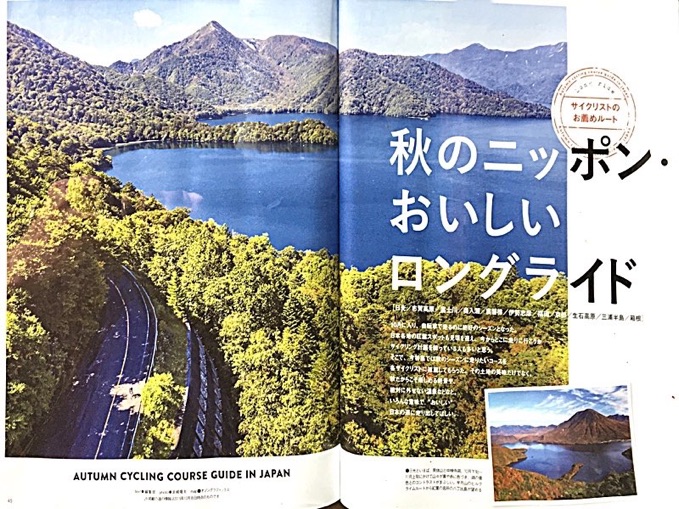
The December cycling magazine issues are out, and the two major players end the year by doing the same sort of thing they’ve done all year: Bicycle Club finds yet another unique freebie to offer (this time it’s socks!), while Cycle Sports has yet another great article with 11 long-ride routes especially chosen for enjoying the late fall delicacies available in each area (Nikko, Hakone, Shiga Kogen and Koya-san among others). Includes some truly lovely photos; available in bookstores for the next month.
TRAY MAGNIFIQUE

BICYCLE CLUB JULY

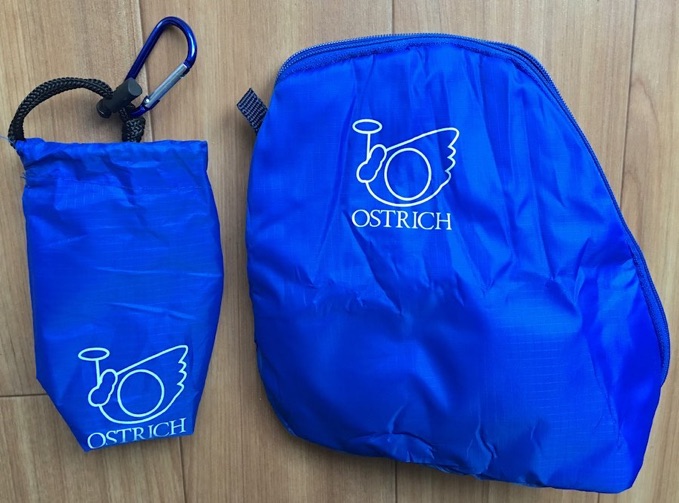
CYCLE SPORTS JUNE

NATIONAL CYCLE ROUTES
The other intriguing article in the Bicycle21 issue mentioned in the previous post is about an ambitious plan to establish National Cycle Routes throughout Japan. The article says that 59 routes are currently being studied for possible designation as National Cycle Routes. Apart from a brief mention on the cycle.travel website in 2015, when the idea was first announced, there seems to have been no information in English on this up to now, so you may be reading about it here for the first time. This article includes a map supposedly showing the location of these candidate routes — we’ve been unable to locate the map online, but the caption says it was provided by the task force studying this issue. Here’s a tiny screenshot to whet your appetite:

CYCLE THE PACIFIC
Apart from the disappointment of this year’s Long Ride / Hill Climb supplement (see previous post), the cycle magazines have some things of interest this month. Cycle Sports has several routes in Miyazaki. Bicycle Club’s freebie offering is a name card case (an essential item in Japan) with a bicycle sprocket drive chain on the front, which is novel. But the most interesting magazine on the stands is the February issue of Bicycle 21, a venerable magazine that has been published since 2003 (!), for not one but two intriguing articles, the second of which we’ll cover in a separate post. The first is a (frustratingly brief) article on the big news about the Pacific Coast Bicycle Route, long-planned but not yet fully in place (and covered in KANcycling’s Shizuoka route). Apparently a committee was formed in November with the goal of having it completed, all the way from Chiba through Wakayama, by the time of the Tokyo Olympics and Paralympics in 2020. Exciting, if it really happens. The issue also has information on a 110km route around Ishikari (near Sapporo) on Hokkaido.


























